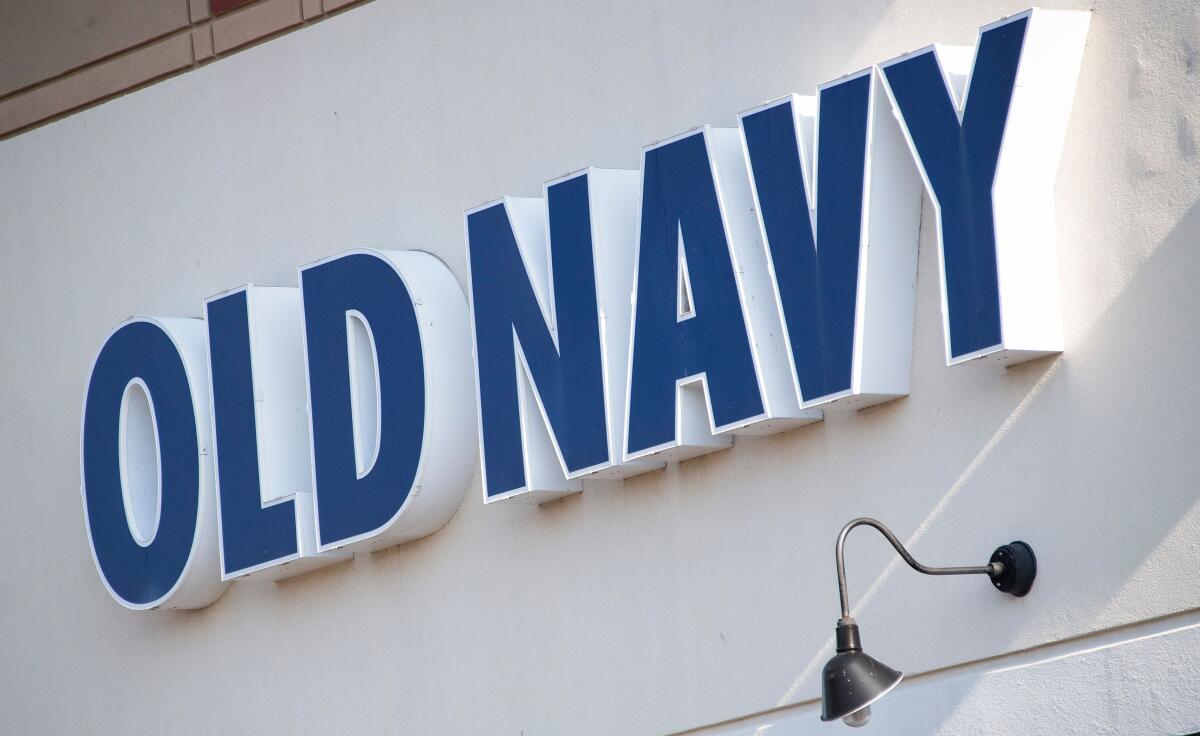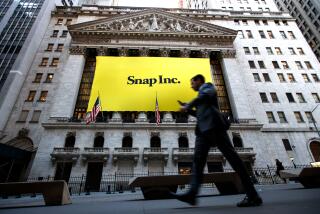Gap scraps its plan to spin off Old Navy

- Share via
Gap Inc., the beleaguered apparel retailer that’s searching for a new chief executive, said it will no longer seek to establish its Old Navy brand as a standalone company.
The plan, announced under previous CEO Art Peck, was to spin off Old Navy on the premise that its fast growth wasn’t being reflected in Gap’s stock price. However, Old Navy’s performance has deteriorated in recent quarters, and Peck was removed as CEO late last year.
“The work we’ve done to prepare for the spin shone a bright light on operational inefficiencies and areas for improvement,” said Robert Fisher, Gap’s interim CEO. “We have learned a lot and intend to operate Gap Inc. in a more rigorous and transformational manner that empowers our growth brands, Old Navy and Athleta, and appropriately focuses on profitability for Banana Republic and Gap brand.”
The company said it expects its full-year 2019 profit to be “moderately above” its previous projection of $1.70 to $1.75 a share because of “better-than-anticipated promotional levels over the holiday period.”
The company also announced that Neil Fiske, president and CEO of the namesake Gap brand, will leave the company. Gap has struggled in recent years, with several fashion misses and declining sales.
The announcements were made after the close of markets, and Gap shares jumped as much as 15% in after-hours trading.
“Gap has lost its identity,” said Poonam Goyal, a retail analyst at Bloomberg Intelligence. “It needs to fix operational execution, brand messaging, and the entire organization needs an uplift. Who is Gap and who are they trying to attract?”
The decision is a significant shift for Gap. The day after Peck’s departure in November, the company said its board “continues to believe in the strategic rationale for the planned separation, and the preparation for separation continues as planned.”
However, Jefferies analyst Randal Konik questioned the spinoff in a note this month, asking whether it “continues to make strategic sense” considering the brand’s “recently underwhelming results.”
Cost may have been an issue. In a September presentation about the spinoff, Gap said the separation would create a one-time expense of $400 million to $450 million and would cost $300 million to $350 million in terms of capital.
Gap, founded in 1969 in San Francisco, rose to prominence as a denim emporium selling jeans from Levi Strauss & Co., another Bay Area institution. It helped pioneer the vertical integration of retail and started producing its own branded goods. By the 1990s it had transformed into a fashion juggernaut, jumping on the khaki-pants trend and building up robust secondary brands in Banana Republic and Old Navy.
But struggles started brewing in the middle of the next decade as mall traffic declined and operational issues cropped up. One of the most famous missteps came in 2010, when the company unveiled a new Gap logo. Some shoppers complained, so it reverted to the old logo just a week later.
The company declined to comment Thursday beyond its statement.
Gap’s shares declined 31% in 2019, one of the worst performers on the Standard & Poor’s 500 index.
Goyal said that she was “surprised” at Fiske’s departure and that the whole company “needs to show a new strategy across their biggest brands.”
Gap said it will release fourth-quarter earnings Feb. 27. Investors may have to wait until then for more details.
“Spinoff or no spinoff, Gap’s underlying health ... is still a concern,” Goyal said.
More to Read
Inside the business of entertainment
The Wide Shot brings you news, analysis and insights on everything from streaming wars to production — and what it all means for the future.
You may occasionally receive promotional content from the Los Angeles Times.










